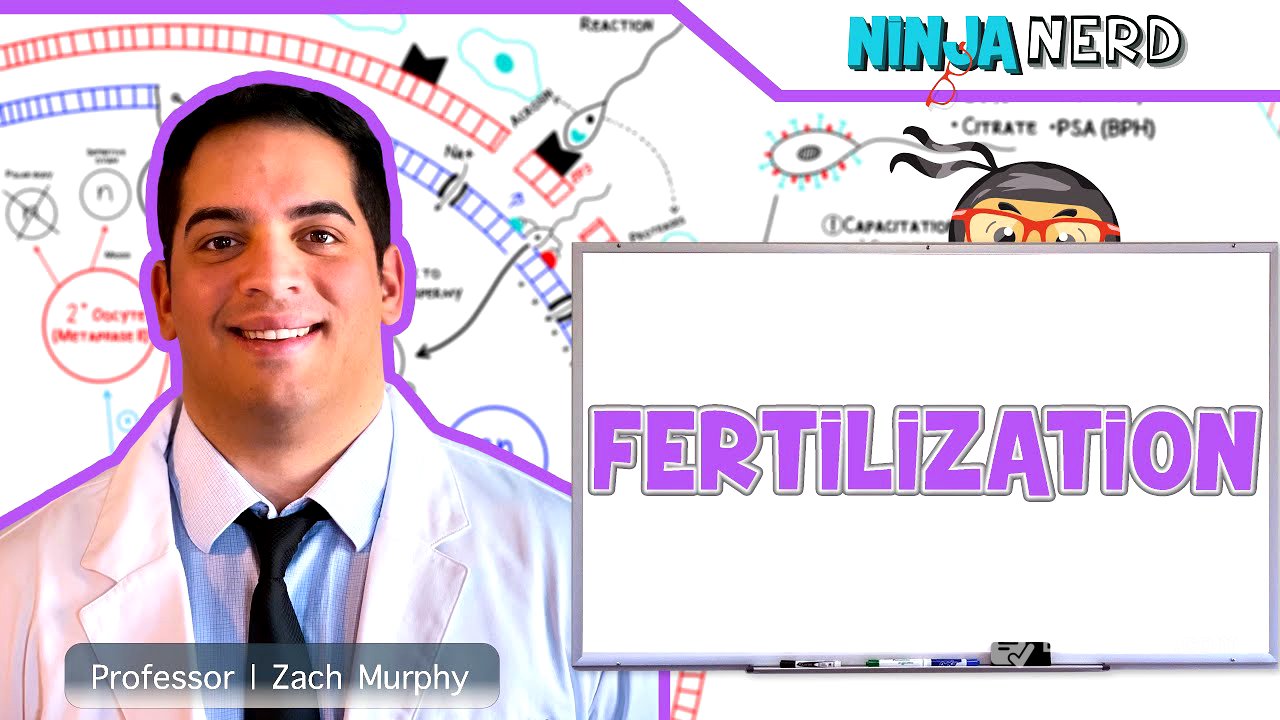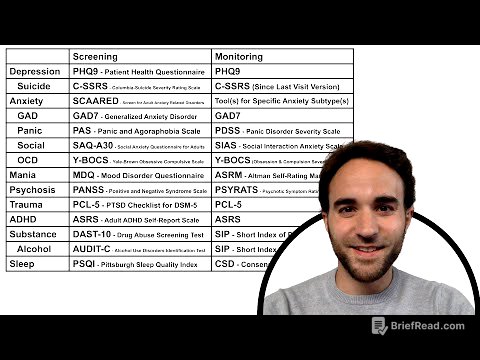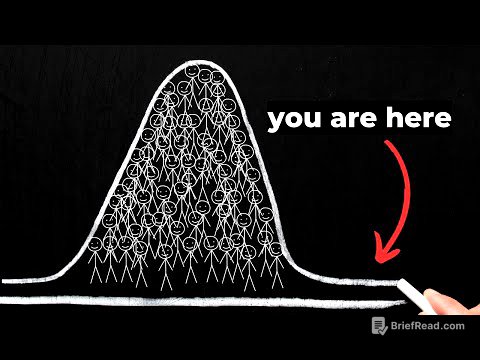TLDR;
This video explains the complex process of fertilization, starting from the journey of sperm to the egg and detailing the key events that lead to the formation of a zygote. It covers the roles of seminal fluids, sperm structure, capacitation, acrosomal reaction, and the mechanisms to prevent polyspermy, ultimately leading to the fusion of genetic material and the beginning of an embryo.
- Seminal vesicles contribute 60-70% of seminal fluid, providing fructose for sperm energy and prostaglandins to aid sperm movement.
- The prostate gland contributes about 30% of seminal fluid, providing citrate for energy and enzymes like fibrinolysin and prostate-specific antigen (PSA).
- Capacitation cleans the sperm head, removing proteins and cholesterol to prepare it for fertilization.
- The acrosomal reaction releases enzymes to penetrate the zona pellucida.
- Fast and slow blocks to polyspermy prevent multiple sperm from fertilizing the egg.
Introduction: The Journey to Fertilization [0:07]
The video begins by outlining the path of sperm from ejaculation into the female genital tract, leading to the egg. The egg, a secondary oocyte frozen in metaphase II, is located in the ampulla of the fallopian tube, surrounded by granulosa cells forming the corona radiata. The video sets the stage for understanding the complex process of fertilization by highlighting the initial locations and states of both the sperm and the egg.
Seminal Fluid Composition and Function [1:21]
The discussion covers the composition of seminal fluid, emphasizing the contributions of the seminal vesicles and the prostate gland. Seminal vesicles account for 60-70% of the fluid, providing fructose for sperm energy, prostaglandins to stimulate uterine contractions aiding sperm transport, and coagulase for initial semen coagulation. The prostate gland contributes about 30% of the seminal fluid, offering citrate as an energy source and enzymes like fibrinolysin to break down the initial coagulation, along with prostate-specific antigen (PSA), a clinical marker for benign prostatic hyperplasia (BPH).
Sperm Structure and Function [3:35]
The video describes the structure of a sperm cell, highlighting the head containing the nucleus with 23 chromosomes and the acrosome filled with hydrolytic enzymes. The midpiece is packed with mitochondria to produce ATP for energy, and the tail, or flagellum, is responsible for movement, featuring a 9+2 arrangement of microtubules and dynein proteins. The flagellum's structure includes microtubules arranged in pairs of nine around the periphery, with two additional microtubules in the center, along with motor proteins like dynein that facilitate movement.
Sperm Activation and Movement in the Female Reproductive Tract [5:27]
Once ejaculated, sperm utilize fructose for energy, while prostaglandins induce uterine contractions to aid their movement. Coagulase causes the sperm to latch onto the vaginal walls, and fibrinolysin later releases them for further travel. Relaxin enhances sperm motility, and seminal plasma acts as an antibiotic, protecting sperm in the female genital tract. Sperm move faster in the alkaline environment of the female reproductive tract, progressing towards fertilization.
Oocyte Structure and Preparation for Fertilization [8:26]
The video zooms in on the oocyte, showing the cell membrane, zona pellucida with ZP3 binding proteins, and the surrounding granulosa cells of the corona radiata. It warns against factors like alcohol, selenium deficiency, lead exposure, and pesticides, which can cause sperm abnormalities. The initial step for sperm is capacitation, which involves the removal of glycoproteins and cholesterol from the sperm head as it moves through the female reproductive tract, preparing it for fertilization.
Capacitation and Hyper Motility [9:26]
Capacitation involves the removal of proteins and cholesterol from the sperm head, modifying glycoproteins and increasing sperm motility, known as hypermotility. Estrogen produced during the menstrual cycle aids this process by stimulating the production of uterine and cervical fluids. This cleaning and activation process is essential for the sperm to effectively navigate through the hyaluronic acid produced by granulosa cells and reach the zona pellucida.
Acrosomal Reaction and Penetration of the Zona Pellucida [11:02]
Capacitated sperm bind to ZP3 receptors on the zona pellucida, triggering an influx of calcium ions that initiates the acrosomal reaction. During this reaction, the acrosome releases enzymes like acrosin and proteases, which digest a path through the zona pellucida, allowing the sperm to move closer to the oocyte membrane. This burrowing action is essential for the sperm to reach and fuse with the oocyte.
Fast Block to Polyspermy [14:21]
The sperm's beta subunit binds to proteins on the oocyte membrane, opening sodium channels and creating a positive charge across the membrane. This electrical change prevents other sperm from binding, establishing a fast block to polyspermy. This mechanism ensures that only one sperm fertilizes the egg by quickly altering the oocyte's electrical potential.
Membrane Fusion and the Slow Block to Polyspermy [17:34]
After the fast block, the sperm's alpha subunit binds to the oocyte membrane, leading to membrane fusion and the release of the sperm's nuclear material into the oocyte. The entry of the sperm triggers the smooth endoplasmic reticulum to release calcium ions, activating lysosomes. These lysosomes migrate to the cell cortex and release hydrolytic enzymes, degrading ZP3 binding proteins and hardening the cell membrane, creating a slow block to polyspermy.
Completion of Meiosis II and Zygote Formation [21:04]
The release of calcium ions not only initiates the slow block to polyspermy but also stimulates the secondary oocyte to complete meiosis II, forming a definitive ovum and a polar body. The male pronucleus then fuses with the female pronucleus, resulting in the formation of a diploid zygote, marking the beginning of the embryo and the successful completion of fertilization.








